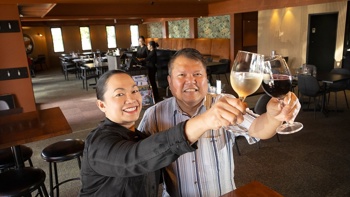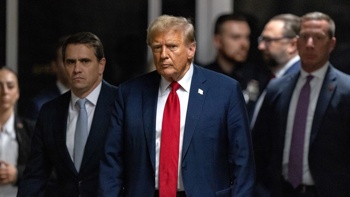Foreign tourists could pay $100 and New Zealanders $40 to cope with a huge increase in trampers - especially overseas travellers - and their effect on the environment, he suggested.
Sanson said the country's Great Walks brand had "exploded" but this popularity had created some problems.
A report prepared 18 months ago said 30 per cent of international visitors came to New Zealand to connect with nature. That figure was now 50 per cent.
As tourism numbers increased to New Zealand, it was important to protect the country's point of difference - its natural environment. In March, he took the United States ambassador to the Tongariro Alpine Crossing - a 19.4km one-day trek between the Mangatepopo Valley and Ketatahi Rd in the North Island.
"Every time we stopped we were surrounded by 40 people. That is not my New Zealand.
We have got to work this stuff out - these are the real challenges," Sanson told the Queenstown Chamber of Commerce yesterday.
On the Routeburn Track numbers were increasing by 10 per cent annually, with 70 per cent of the users coming from overseas.
Introducing differential charges on the Great Walks was one potential mechanism to alleviate pressure.
Sanson said legislation did not allow the department to cap numbers, or charge people for anything other than the use of facilities.
"We have got to think [about that]. I think New Zealand has to have this debate about how we're going to do bed taxes, departure charges - we have got to work our way around this.
"I think a differential charge [is an option] - internationals [pay] $100, we get a 60 per cent discount."
"We have got 'freedom of access' [so] we have to change our legislation [to do that].
"There would be a lot of debates about that [but] I think we've got to have that debate ... because we're going to have to do something - this goes to the heart of being a Kiwi.
"The differential charge, some ministers say that looks a bit third world-ish ... I quite like it."
In February the Conservation Authority, which advises DOC and the Conservation Minister, suggested that international tourists might have to pay to visit national parks because of the tourism boom.
Chairman Warren Parker said DOC could not afford to pay the growing costs of infrastructure, waste removal and cleaning campgrounds unless it introduced some kind of user-pays charges for tourists.
Sanson said in February that 600,000 visitors were expected at Milford this year. There was very heavy demand on the Routeburn and Kepler tracks, plus record numbers on the Te Araroa trail across the length of the country.
Trampers already pay to stay at most huts on Department of Conservation walks, based on a three-tier system.
Huts on Great Walks cost $54 a night for the Routeburn, Milford, and Kepler tracks, $32 for the Heaphy, Abel Tasman Coast Track, Tongariro Northern Circuit, Whanganui Journey and Lake Waikaremoana and $22 for Rakiura.
Huts on these tracks are double-glazed and include gas cookers, heating, toilets and mattresses. Some have resident wardens.
On other tracks, a serviced hut (with sleeping platforms, mattress, toilets, water and fuel) costs $15 a night. A standard hut (sleeping platforms, toilets, water) is $5 a night and a basic hut (bivvy, shelter, simple hut) is free.









